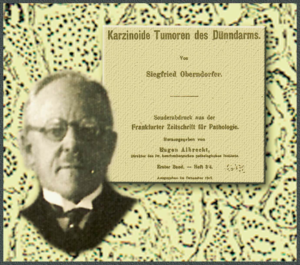What is the difference: Neuroendocrine Cancer vs. Carcinoid Cancer?
Home » For Patients » Newly Diagnosed » Neuroendocrine Cancer vs. Carcinoid Cancer
What is carcinoid cancer? Is carcinoid really cancer? Can carcinoid cancer be benign? How is carcinoid cancer different from neuroendocrine cancer?
In most cases, the terms “carcinoid tumor” or “carcinoid cancer” are outdated ways to describe a slow-growing neuroendocrine tumor (NET). Generally speaking, the term “carcinoid” has fallen out of favor.
For the first ten years in its history, the Neuroendocrine Tumor Research Foundation (NETRF) was called the Caring for Carcinoid Foundation. The name was changed in 2015.
1900s:
Carcinoid = “cancer-like”


Richard Warner, MD, New York, NY
Historical context of carcinoid and neuroendocrine tumors. Watch Video
James Yao, MD, MD Anderson Cancer Center, Houston, TX
NETs Overview. Watch Video11 Irvin M Modlin, Micheal D. Shapiro, Mark Kidd. “Siegfried Oberndorfer: Origins and perspectives of carcinoid tumors.” Human Pathology. 35.12 (2004): 1440-1451.
